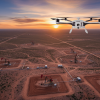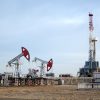In times of crisis like today, critical infrastructure is the glue that holds modern society together. And with nearly a quarter of the world’s population stuck at home, electric power generation is about as critical as it gets.
Despite trends towards sustainable and renewable energy sources, thermoelectric energy – the generation of electricity from the conversion of heat derived from coal, nuclear fission, natural gas or oil – still comprises the bulk of global energy sector production. In the US alone, 90 percent of electricity is still generated by thermoelectric power plants.
Thermoelectric Challenges
Thermoelectric power plants are large facilities – frequently massive. They are complex and rely on heavy and dangerous equipment that requires ongoing, constant and costly maintenance. They employ a large, distributed and highly-specialized workforce across multiple geographic sites. They create large-scale chemical and thermal reactions that are inherently life-threatening. And they operate under strict environmental regulatory regimes that minutely examine and intervene in both the operational and financial sides of their business.
All this adds up to an industry with immense social responsibility, huge liability, and minuscule margins of error. Downtime is not acceptable – both in regards to the responsibility to consumers and also in financial terms. The losses of even an hour of unplanned downtime can be staggering.
Given the potentially catastrophic effects of operational oversights and the highly-competitive energy market, thermoelectric power plant operators are constantly seeking innovative yet cost-effective solutions to meet security, safety, and operational challenges.
The Old Way
Traditional thermoelectric power plant maintenance was – and still is, to a large extent – conducted manually. This massive effort involves teams of engineers and technicians physically and periodically combing high altitude, hard-to-reach assets and electricity infrastructure, checking for performance issues and wear-and-tear. This manual maintenance and monitoring are supplemented by an array of remotely-monitored sensors.
Yet, as we discussed in a recent blog post, these teams suffer the same vulnerabilities as everyone in today’s Coronavirus pandemic – and plant operators are challenged to keep them in the field.
Moreover, manual maintenance is by definition costly, and in practice very time consuming. This results in high overhead that cuts into the bottom line, and long gaps between inspections that result in unacceptable delays before problems are spotted. In many cases, it can literally be weeks or months before critical defects are picked up – if they are at all. Sensors provide early warnings, but cannot be deployed over every single component in a huge facility and are prone to false positives. Moreover, alerts from sensors need to be manually checked by crews.
In recent years, thermoelectric power generation facilities have turned to piloted drones technology for data collection and capture images of equipment and facility perimeters at faster speeds and with lower risk than on-the-ground maintenance crews. Yet piloted drones for the energy market require skilled pilots, working in shifts on an employee or outsourced basis. For remote locations, drones and their equipment need to be transported and set up before use – making these solutions slow to deploy in times of crisis. Finally, piloted drones are subject to human error. Pilot oversight or distraction can result in missed indicators of problems that can lead to avoidable downtime or even dangerous malfunctions.
The New Way
As we discuss, autonomous drones in the power industry are meeting the challenges of cost-effective, yet efficient and accurate monitoring of thermoelectric power plants collecting information, improving safety and providing high quality data. Big energy production facilities such as those of Enel and Florida Power & Light (FPL) are utilizing Percepto’s autonomous drones to boost efficiency and productivity while promoting the security of their site and safety of employees.
Flying prescheduled and diverse predefined missions with multiple payloads, and with Beyond Visual Line of Sight (BVLoS) capabilities and licensing – autonomous drone systems like Percepto’s are able to take over inspections when manpower isn’t available in times of crisis like today.
On an ongoing basis, autonomous drones can cost-effectively provide a level of continuous monitoring that simply isn’t feasible with either ground-based manual inspection or piloted drone solutions. For operations and maintenance, security, safety, emergency response, sustainability, and environmental impact studies, and post-event forensics – autonomous drones can help keep the lights on when they’re needed most.






